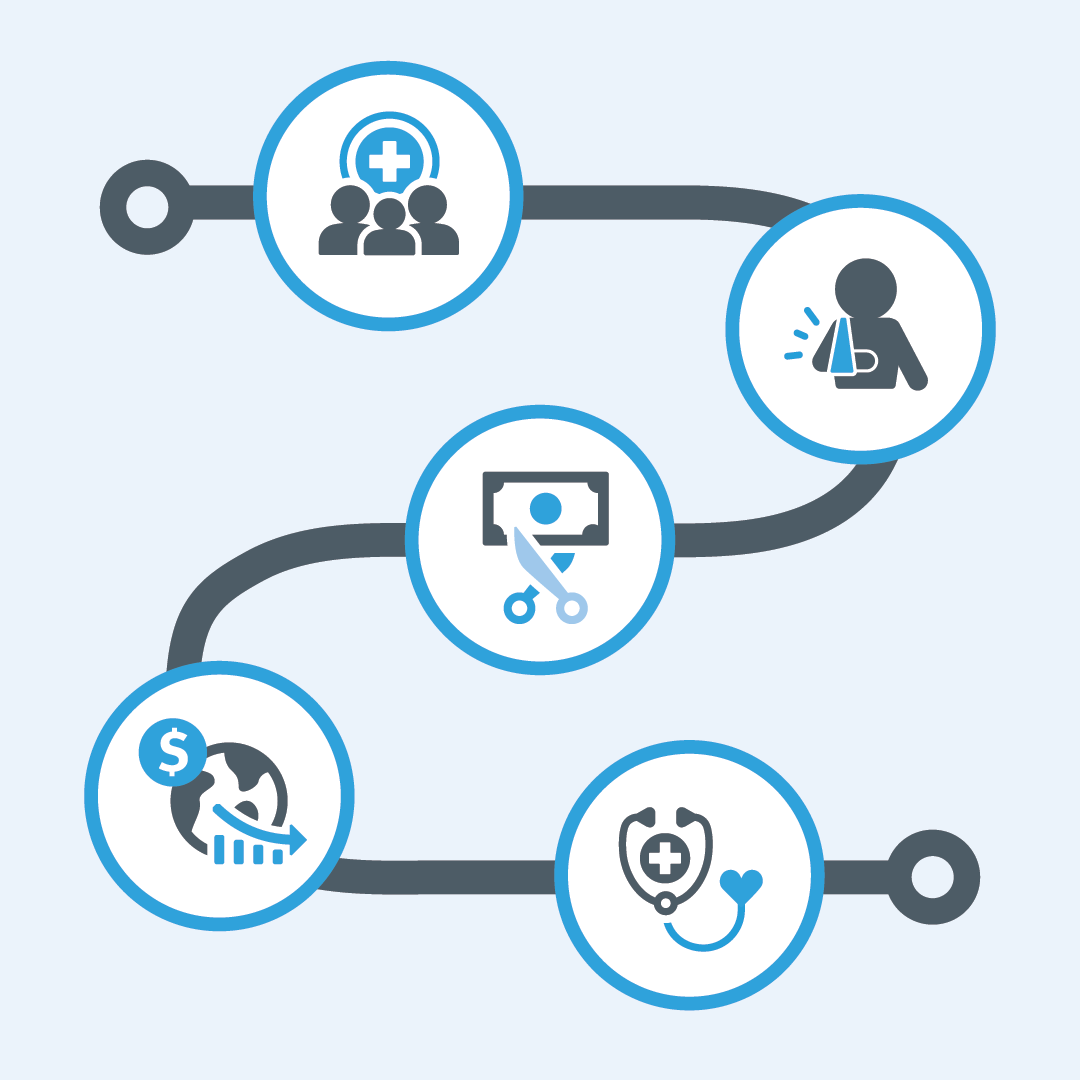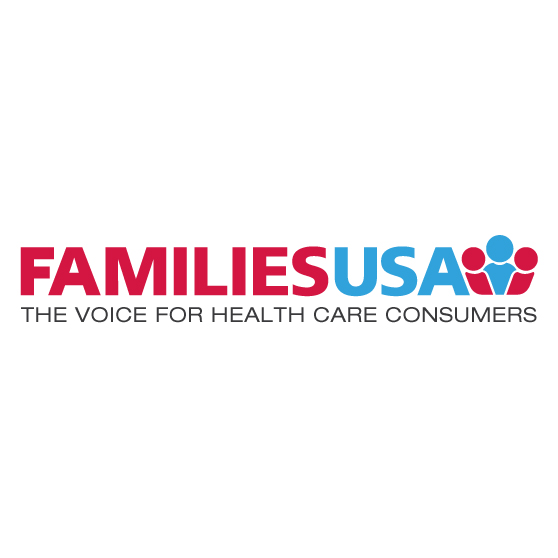Risking Access to Needed Medicines for Medicaid Beneficiaries Will Not Fix High Drug Prices
07.10.2018
Lowering the price of prescription drugs remains one of the top health care priorities for consumers.1 But pharmaceutical manufacturers continue to increase prices on lifesaving medications.2 A recent proposal from the Trump Administration seeks to control prescription drug costs in Medicaid by giving states the authority to eliminate people’s access to needed and even lifesaving drugs. This approach fails to address the underlying issue of pharmaceutical manufacturers setting such high prices at the national level. This approach also leaves it to relatively weak state Medicaid programs to bargain with pharmaceutical manufacturers—potentially, with the lives of their vulnerable beneficiaries in the balance. Furthermore, it is unclear this proposal would result in substantial savings.
High prescription drug prices harm consumers and health programs alike
Prescription drug spending in the United States makes up nearly 17 percent of all health care expenditures.3 It is the fastest-growing category of health spending4 and is projected to continue to grow indefinitely.5 The high prices of prescription drugs force consumers to make impossible choices. Even among adults who have health insurance, 14 percent have skipped doses or failed to fill prescriptions altogether because of cost, a number that rises to 24 percent for low-income adults and for adults with two or more chronic conditions.6
These high prices also have a major impact on spending by federal health care programs, including Medicaid. Prescription drug spending in Medicaid increased more than 24 percent in 2014, driven in part by new, very expensive hepatitis C drugs, and it increased by double digits again in 2015. Though this growth slowed somewhat to 5.5 percent in 2016, state Medicaid agencies remain concerned about the long-term increase in prescription drug spending, particularly given the growth in high-cost specialty drugs.7
The current Medicaid prescription drug program provides needed access and substantial rebates
All state Medicaid programs pay for prescription drugs. Medicaid prescription drug benefits are required by law to cover all prescription drugs approved by the Food and Drug Administration (FDA). In exchange, under the Medicaid Drug Rebate Program, drug manufacturers are required to provide rebates off of the average price paid by other types of insurance that ensure that Medicaid pays the lowest or “best” price compared to those paid by other payers. States can also negotiate supplemental rebates on top of the required rebates. These rebates saved Medicaid over $30 billion in 2016, cutting the amount spent on outpatient prescription drugs by over half, and resulting in Medicaid’s net spending on these drugs accounting for only 5.4 percent of total Medicaid benefit spending.8
Even though Medicaid must cover all FDA-approved drugs, states can still negotiate with drug manufacturers to obtain supplemental rebates. For example, a state may be able to secure a supplemental rebate by placing a particular drug on Medicaid’s preferred drug list, meaning that no prior authorization is needed for covering it and that it has a lower copay.
A Trump Administration proposal risks consumers’ access to needed drugs and may not produce significant savings
In his drug pricing blueprint, President Trump called for new Medicaid demonstration authority that would allow up to five states to implement closed formularies, meaning that some drugs that people with Medicaid coverage currently rely on would no longer be covered by Medicaid.9 The administration’s rationale is as follows: by giving states the ability to say “no” and not cover a drug in Medicaid, states will be able to negotiate rebates that are even bigger than those currently provided through the Medicaid Drug Rebate Program. Massachusetts submitted a similar waiver to the Centers for Medicare and Medicaid Services so that it could implement a closed formulary for all people on Medicaid in its state, including people with disabilities, children, and seniors, with the key difference that Massachusetts appears to have sought to operate BOTH closed formularies and to continue its Medicaid Drug Rebate program. Though CMS denied MA’s waiver request, it did state it would be willing to review a demonstration proposal similar to what was outlined in President Trumps’ drug pricing blueprint—a waiver of the entire Medicaid drug benefit including the drug rebate program, paired with a closed formulary.10
This proposal is bad policy for three reasons. First, given the people covered by Medicaid, there is reason to be particularly concerned about imposing closed formularies in this program. Medicaid is a key source of health insurance coverage for people with disabilities, pregnant women, and children. Adults under age 64 with Medicaid coverage are also more likely to have one or more chronic conditions, such as heart disease and diabetes, which often require ongoing medication for treatment.11 Medicaid beneficiaries are also typically less politically powerful than Medicare beneficiaries and recipients of commercial insurance. States would be engaging in a frontal assault on a politically powerful industry on its core issue of pricing, with their only leverage coming from the market share of their particularly vulnerable beneficiaries. If and when the pharmaceutical industry calls states’ bluff, the losers will be the people with disabilities, pregnant women, and children who depend on Medicaid to cover their medicines.
Second, there is a risk of states employing inaccurate or incomplete definitions of clinical efficacy in making formulary decisions. For example, Massachusetts described wanting to use a closed formulary primarily so that it could have excluded from coverage new drugs with “limited or inadequate clinical efficacy,” such as when a new drug has not demonstrated that it is more effective than a similar drug that is already covered.12 Although it is important that pharmaceutical manufacturers are incentivized to produce new and innovative drugs that meet critical health and public health needs and not just “me-too” drugs, there is often therapeutic value in having multiple drugs for a given condition. Although two drugs may have essentially the same effectiveness at a population level, individual consumers may need to or prefer to take one medication over another due to side effects, interactions with other medications or health conditions, or ease of adherence.13 Additionally, much of the evidence used to demonstrate efficacy is based on studies with overwhelmingly white participants, and there may be important differences in drug efficacy for people of color.14
Third, as Edwin Park from Georgetown University’s Center for Children and Families has explained, it is unlikely that any significant cost savings would result from giving states the ability to use closed formularies in Medicaid. Medicare Part D prescription drug plans can, with the exception of certain protected classes of drugs, implement closed formularies. But this closed formulary authority has resulted in rebates that are much smaller than those in the Medicaid Drug Rebate Program. Additionally, though states cannot currently implement a closed formulary, they can use similar tactics to negotiate directly with manufacturers for supplemental rebates. Yet, such tactics have resulted in only small rebates on top of the required rebates.15 This means that if this demonstration were to result in significant savings, it could only do so by overly restricting access to needed and possibly even lifesaving medications for people with Medicaid coverage.
Strategies for reducing costs without limiting access to needed medicines
Restricting access to needed medications is not the only way to reduce prescription drug spending in Medicaid. At the federal level, the Medicaid and CHIP Payment and Access Commission recently released two recommendations for improving the Medicaid Drug Rebate Program:16
- Closing a loophole in current law that may allow drug manufacturers to “game” the amount they must pay in rebates. This occurs because rebate amounts are based on the average manufacturer price (AMP), which is the price paid to manufacturers by wholesalers. Manufacturers are required to average the price of its authorized generic with its brand name drug to calculate the AMP for the brand name drug. Some manufacturers may strategically sell their authorized generics at low prices to their own subsidiaries in order to lower the corresponding brand drugs’ AMP calculation.
- Strengthening enforcement of rebate rules for manufacturers who submit inaccurate drug classification data. When drug manufacturers misclassify brand name drugs as generic drugs, they end up paying significantly less in rebates. One analysis found that for just 10 potentially misclassified drugs, accurate classification would have resulted in these manufacturers paying an additional $1.3 billion in rebates between 2012 and 2016.
At the state level, legislators and other policymakers have introduced a number of proposals, including requirements for prior notice and transparency when there are large price hikes17, prohibiting price gouging by manufacturers18, and establishing statewide drug cost review commissions that would set fair prices for all consumer and payers in the state, including Medicaid.19 These policies have the potential to reduce prescription drug spending, without having to reduce access for consumers.
Conclusion
Prescription drug prices are a real problem for both individual consumers and for the health care system as a whole. But people on Medicaid are not the cause of high prescription drug spending, and restricting their access to needed medications will not solve this problem. Negotiation and other direct governmental interventions should be a part of addressing high drug prices, but it is the federal government that is best positioned to go head-to-head with pharmaceutical manufacturers, not individual Medicaid programs. Reining in these high and rising prices will require bold action that goes after the underlying cause: the prices set for these drugs by manufacturers.
Download the issue brief (pdf) here.
1 Henry J. Kaiser Family Foundation (KFF), Kaiser Health Tracking Poll – Late April 2017: The Future of the ACA and Health Care & the Budget (San Francisco: KFF, April 26, 2017), available online at https://www.kff.org/report-section/kaiser-health-tracking-poll-late-april-2017-the-future-of-the-aca-and-health-care-the-budget-rx-drugs/.
2 FiercePharma,Pfizer, Novartis and more post price hikes on dozens of drugs, but AbbVie’s is worth the most (Newton, MA: FiercePharma, January 4, 2018), available online at https://www.fiercepharma.com/pharma/drug-price-hikes-a-few-bad-actors-or-widespread-pharma.
3 Department of Health and Human Services (HHS), Office of the Assistant Secretary for Planning and Evaluation, Observations on Trends in Prescription Drug Spending (Washington, DC: HHS, March 8, 2016), available online at https://aspe.hhs.gov/system/files/pdf/187586/Drugspending.pdf.
4 Aaron Kesselheim, Jerry Avorn, and Ameet Sarpatwari, “The High Cost of Prescription Drugs in the United States: Origins and Prospects for Reform,” Journal of the American Medical Association, 316, no. 8 (August 23/30, 2016), available online at http://jama.jamanetwork.com/article.aspx?articleid=2545691&quizId=4604&atab=8.
5 Medicaid and CHIP Payment and Access Commission (MACPAC), Improving Operations of the Medicaid Drug Rebate Program(Washington, DC: MACPAC, June 2018), available online at https://www.macpac.gov/publication/improving-operations-of-the-medicaid-drug-rebate-program/.
6 Dana Sarnak, David Squires, and Shawn Bishop, Paying for Prescription Drugs Around the World: Why Is the U.S. an Outlier?(New York City: The Commonwealth Fund, October 5, 2017), available online at https://www.commonwealthfund.org/publications/issue-briefs/2017/oct/paying-prescription-drugs-around-world-why-us-outlier.
7 MACPAC,Medicaid Payment for Outpatient Prescription Drugs(Washington, DC: MACPAC, May 2018), available online at https://www.macpac.gov/wp-content/uploads/2015/09/Medicaid-Payment-for-Outpatient-Prescription-Drugs.pdf.
8 MACPAC, Improving Operations, op cit.
9 Department of Health and Human Services (HHS), American Patients First: The Trump Administration Blueprint to Lower Drug Prices and Reduce Out-of-Pocket Costs (Washington, DC: HHS, May 2018), available online at https://www.hhs.gov/sites/default/files/AmericanPatientsFirst.pdf.
10 Department of Health and Human Services (HHS), Centers for Medicare & Medicaid Services, MassHealth Medicaid Section 1115 Demonstration (Washington, DC: HHS, June 27, 2018), available online at https://www.medicaid.gov/Medicaid-CHIP-Program-Information/By-Topics/Waivers/1115/downloads/ma/ma-masshealth-ca.pdf.
11 J. Chapel, M. Ritchey, D. Zhang, and G. Wang, “Prevalence and Medical Costs of Chronic Diseases Among Adult Medicaid Beneficiaries,” American Journal of Preventive Medicine53, 6S2 (December 2017), available online at https://www.ncbi.nlm.nih.gov/pubmed/29153115.
12 Massachusetts Executive Office of Health and Human Services (EOHHS), Request to Amend Massachusetts’ Section 1115 Demonstration: MassHealth (Boston: EOHHS, September 8, 2107), available online at https://www.medicaid.gov/Medicaid-CHIP-Program-Information/By-Topics/Waivers/1115/downloads/ma/ma-masshealth-pa3.pdf.
13 Massachusetts Executive Office of Health and Human Services (EOHHS), Public Comments to Proposed MassHealth Section 1115 Demonstration Amendment Request (Boston: EOHHS, August 21, 2017), available online at http://www.mass.gov/eohhs/docs/eohhs/healthcare-reform/masshealth-innovations/public-comments-to-proposed-masshealth-section-1115-demonstration-amendment-request.pdf.
14 Esteban Burchard, Sam Oh, Marilyn Foreman, and Juan Celedón, “Moving toward True Inclusion of Racial/Ethnic Minorities in Federally Funded Studies. A Key Step for Achieving Respiratory Health Equality in the United States,” American Journal of Respiratory and Critical Care Medicine191, no. 5 (January 2015), available online at https://www.atsjournals.org/doi/abs/10.1164/rccm.201410-1944PP?url_ver=Z39.88-2003&rfr_id=ori%3Arid%3Acrossref.org&rfr_dat=cr_pub%3Dpubmed.
15 Edwin Park, Center for Children & Families (CCF) of the Georgetown University Health Policy Institute, Trump Administration Medicaid Drug Rebate Proposal Raises Serious Concerns for Beneficiaries, Unlikely to Reduce Costs (Washington, DC: CCF, April 2, 2018), available online at https://ccf.georgetown.edu/2018/04/02/trump-administration-medicaid-drug-rebate-proposal-raises-serious-concerns-for-beneficiaries-unlikely-to-reduce-costs/.
16 MACPAC, Improving Operations, op cit.
17 Rachel Linn Gish, Health Access Foundation, Setting National Policy, CA Governor Brown Signs SB 17 on Prescription Drug Price Transparency (Sacramento: Health Access Foundation, October 10, 2017), available online at http://health-access.org/setting-national-policy-ca-governor-brown-signs-sb-17-on-prescription-drug-price-transparency/.
18 Claire McAndrew, Families USA, Taking on High Prescription Drug Costs in Illinois: Q&A with Rep. Will Guzzardi (Washington, DC: Families USA, April 3, 2018), available online at https://familiesusa.org/blog/2018/04/taking-high-prescription-drug-costs-illinois-qa-rep-will-guzzardi.
19 Joan Carter Conway and Joseline Pena-Melnyk, “Md. ‘Drug Cost Commission’ would set fair prescription prices,” The Baltimore Sun (February 21, 2018), available online at http://www.baltimoresun.com/news/opinion/oped/bs-ed-op-0222-drug-commission-20180221-story.html.




